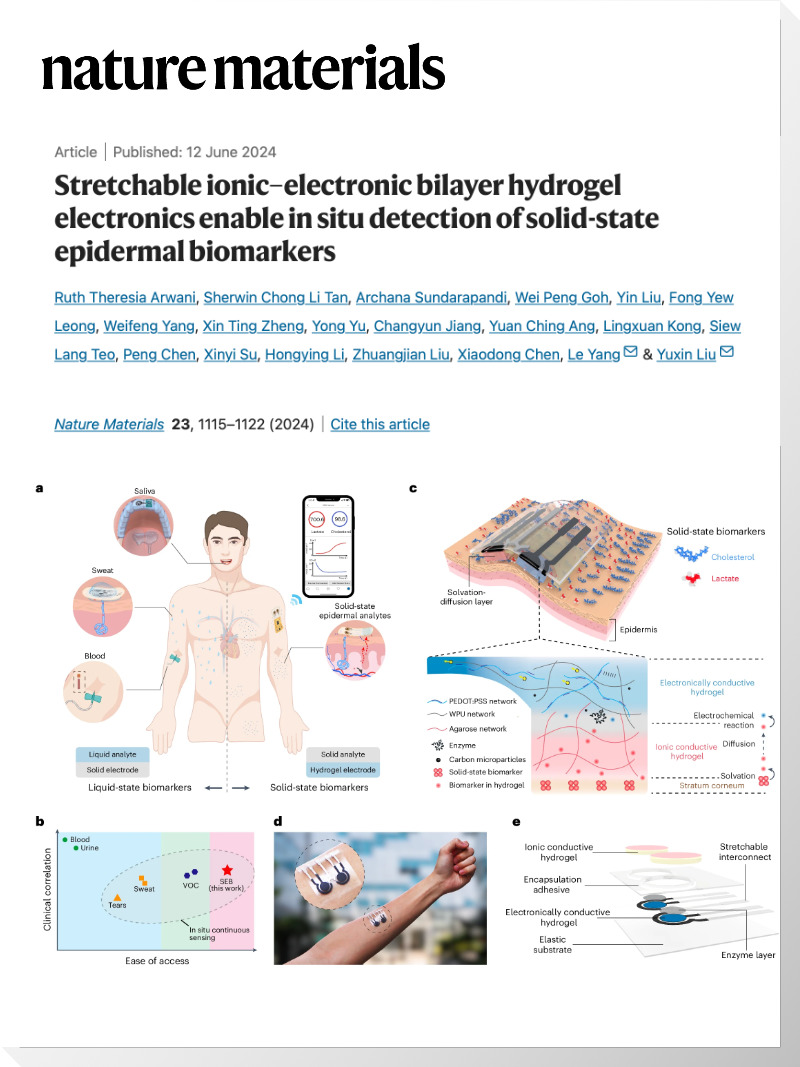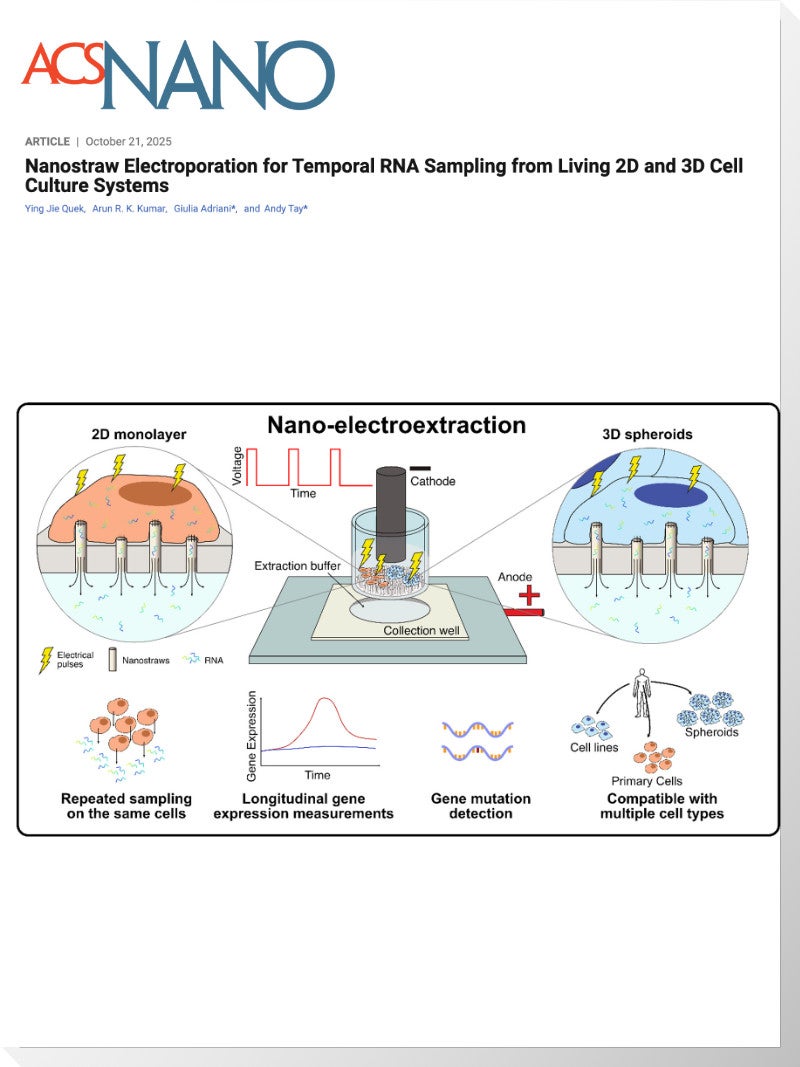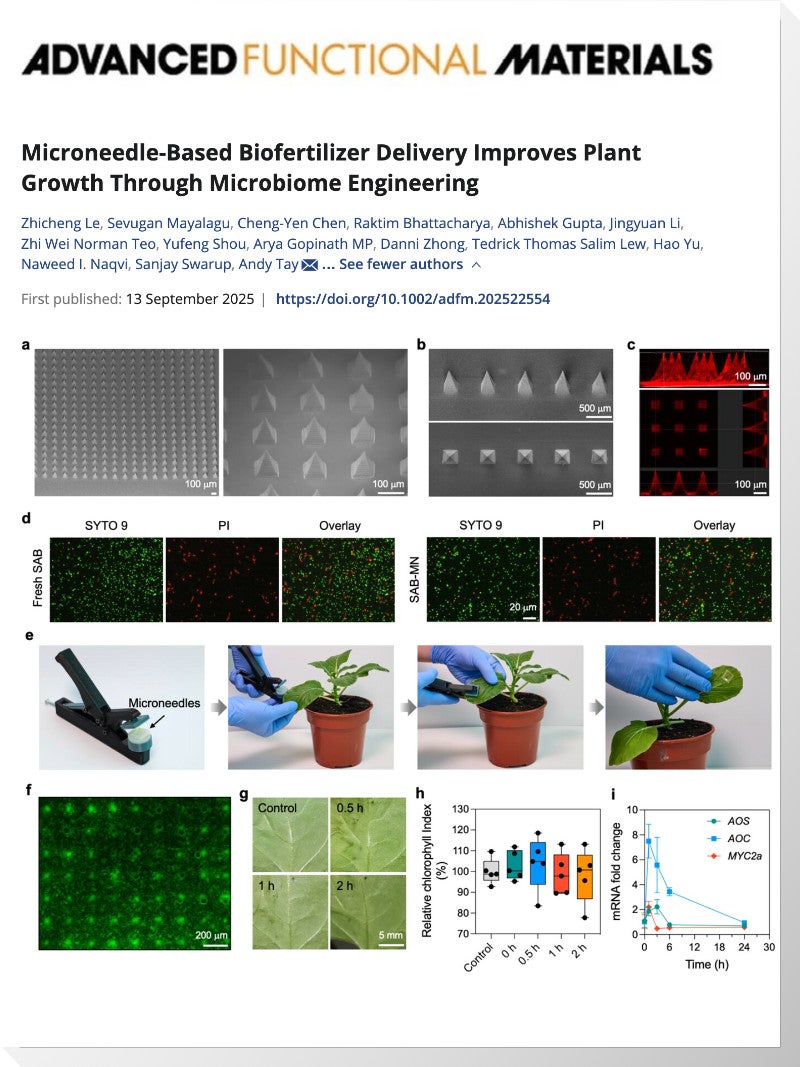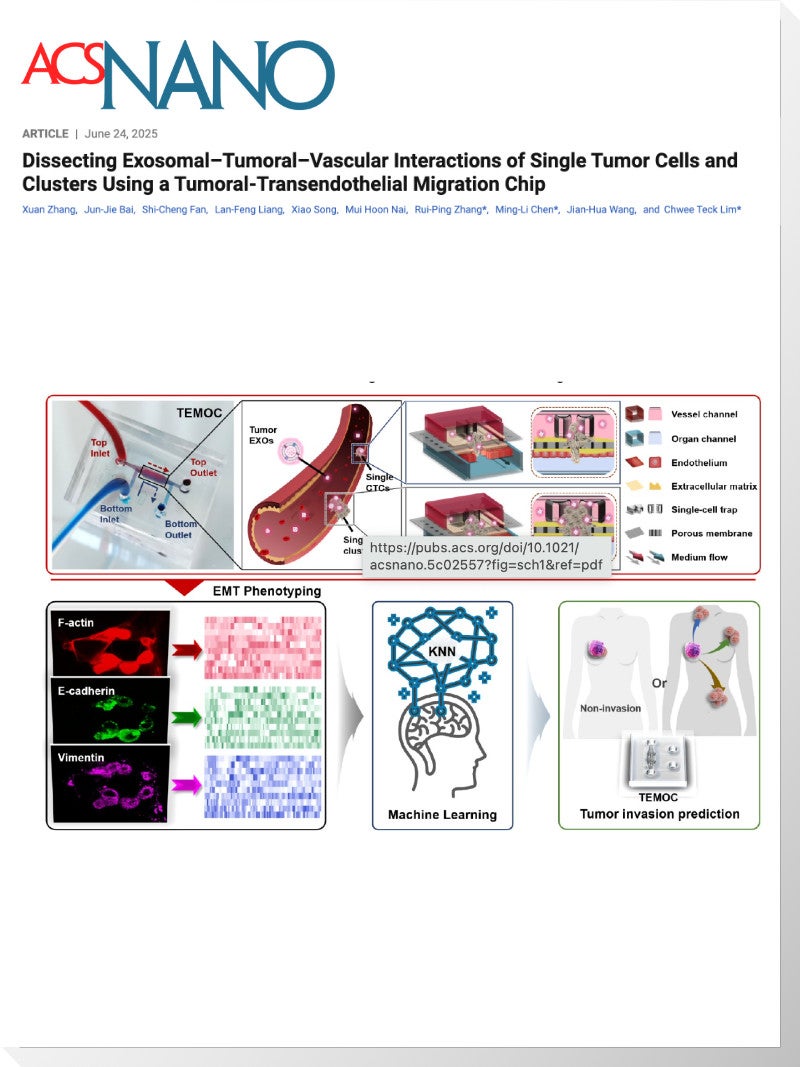Stretchable ionic–electronic bilayer hydrogel electronics enable in situ detection of solid-state epidermal biomarkers
- June 12, 2024

Ruth Theresia Arwani, Sherwin Chong Li Tan, Archana Sundarapandi, Wei Peng Goh, Yin Liu, Fong Yew Leong, Weifeng Yang, Xin Ting Zheng, Yong Yu, Changyun Jiang, Yuan Ching Ang, Lingxuan Kong, Siew Lang Teo, Peng Chen, Xinyi Su, Hongying Li, Zhuangjian Liu, Xiaodong Chen, Le Yang & Yuxin Liu
Abstract
Continuous and in situ detection of biomarkers in biofluids (for example, sweat) can provide critical health data but is limited by biofluid accessibility. Here we report a sensor design that enables in situ detection of solid-state biomarkers ubiquitously present on human skin. We deploy an ionic–electronic bilayer hydrogel to facilitate the sequential dissolution, diffusion and electrochemical reaction of solid-state analytes. We demonstrate continuous monitoring of water-soluble analytes (for example, solid lactate) and water-insoluble analytes (for example, solid cholesterol) with ultralow detection limits of 0.51 and 0.26 nmol cm−2, respectively. Additionally, the bilayer hydrogel electrochemical interface reduces motion artefacts by a factor of three compared with conventional liquid-sensing electrochemical interfaces. In a clinical study, solid-state epidermal biomarkers measured by our stretchable wearable sensors showed a high correlation with biomarkers in human blood and dynamically correlated with physiological activities. These results present routes to universal platforms for biomarker monitoring without the need for biofluid acquisition.






